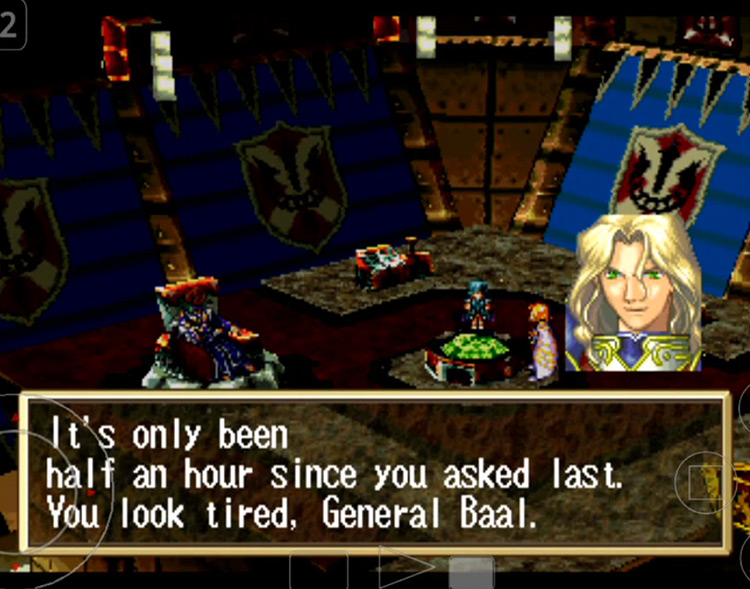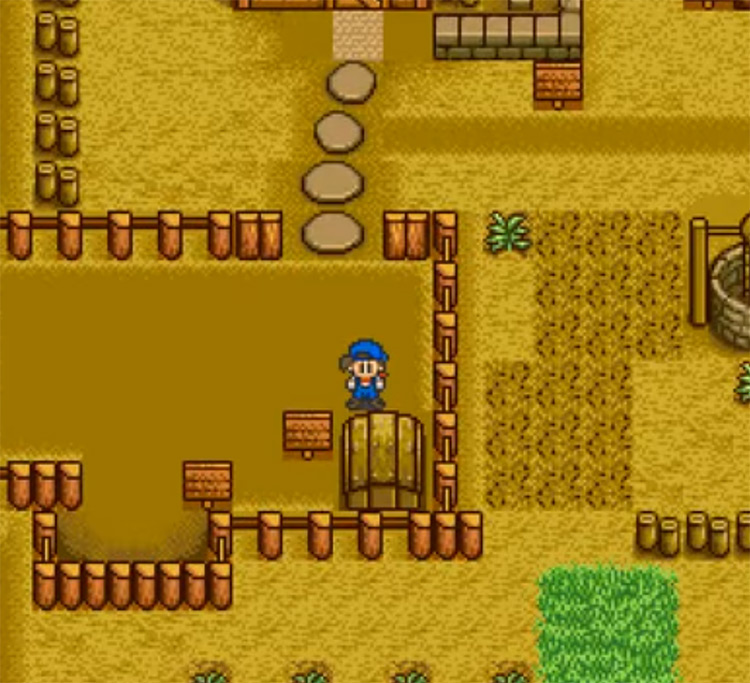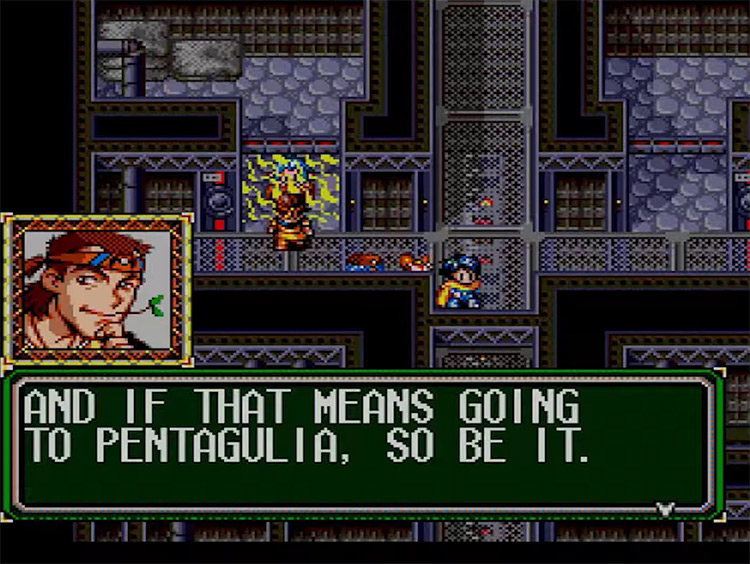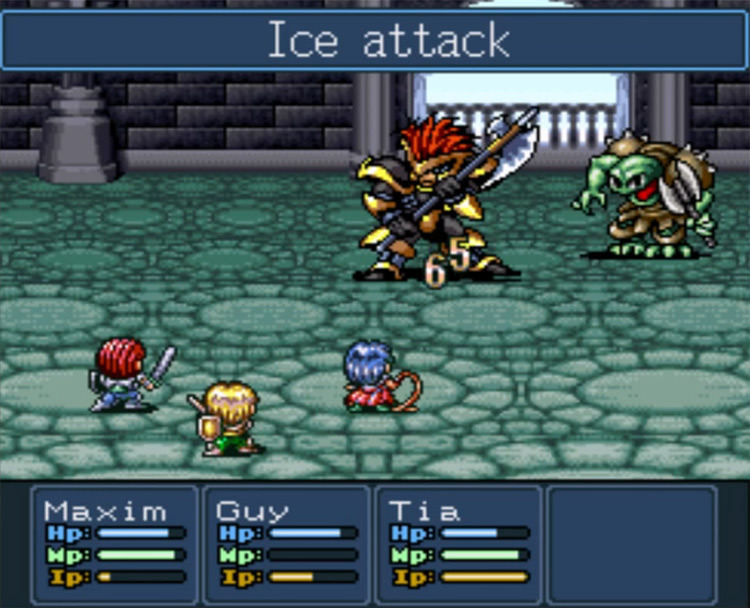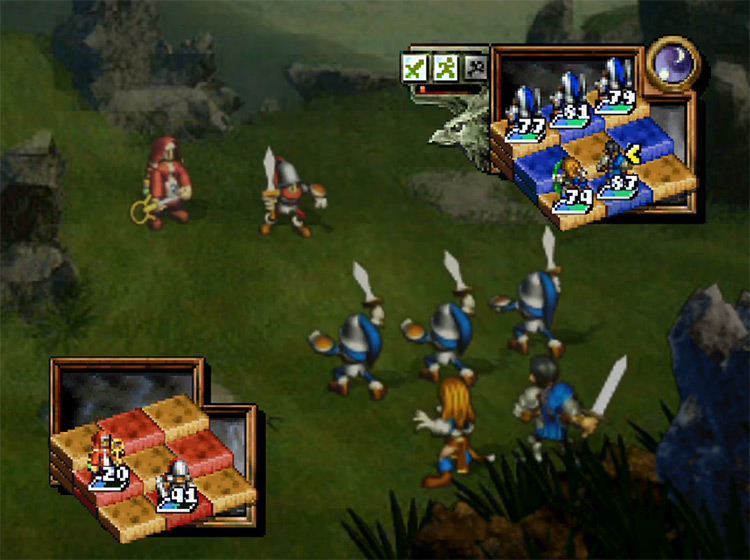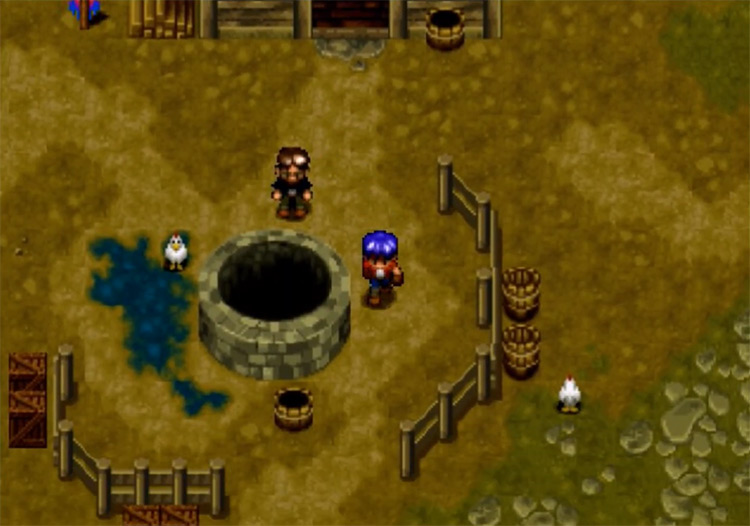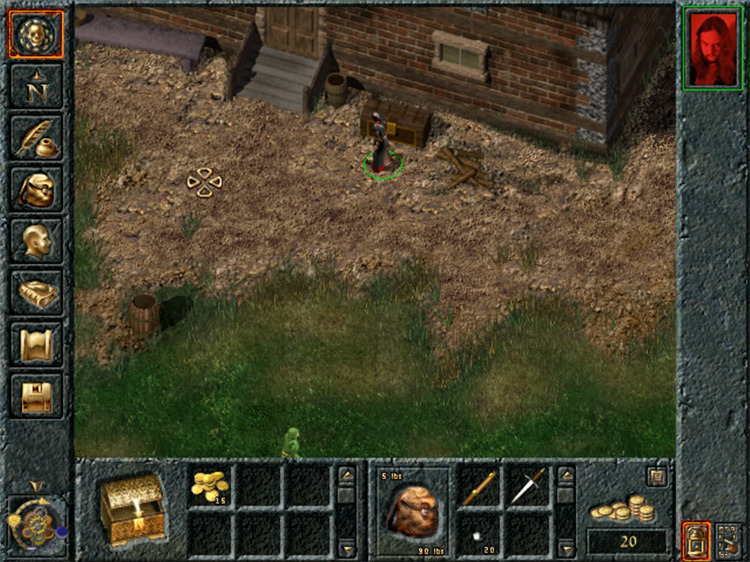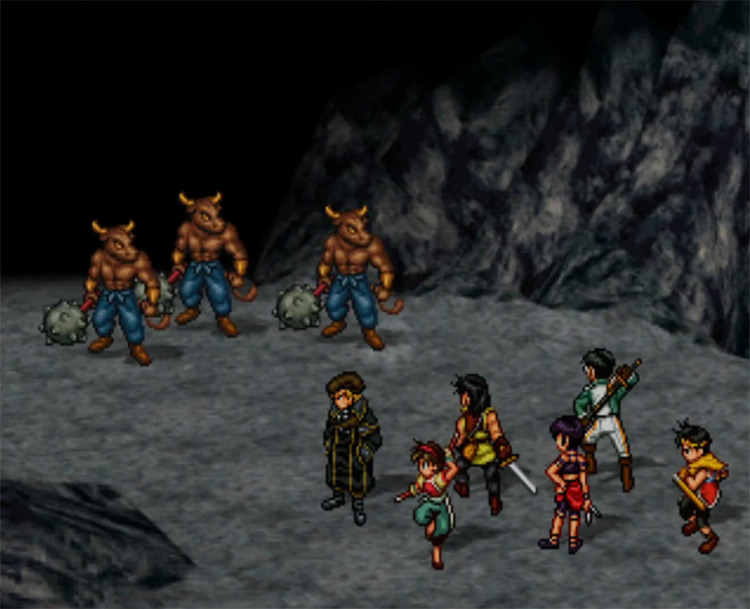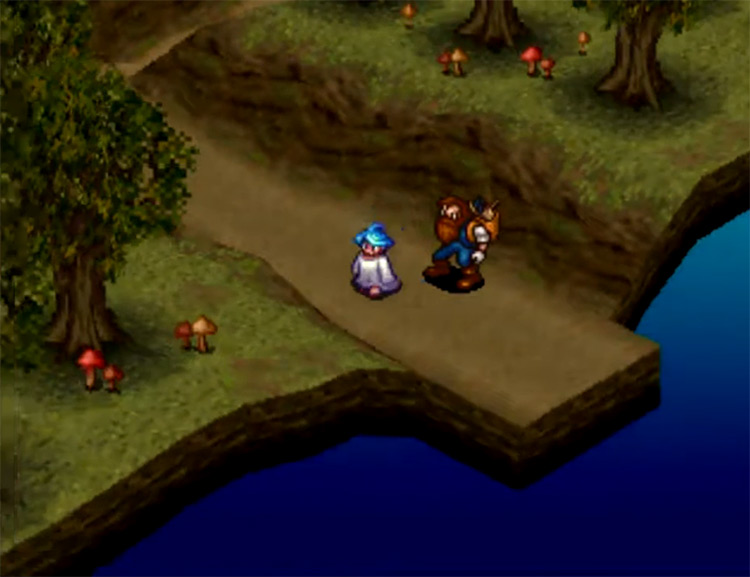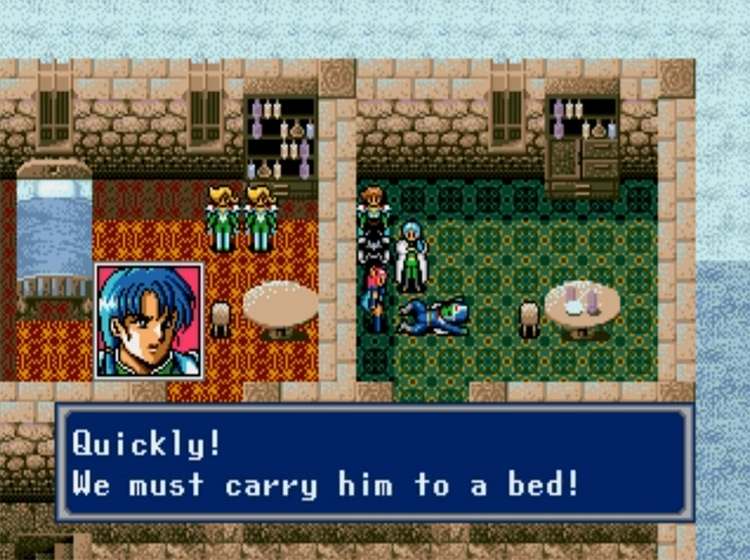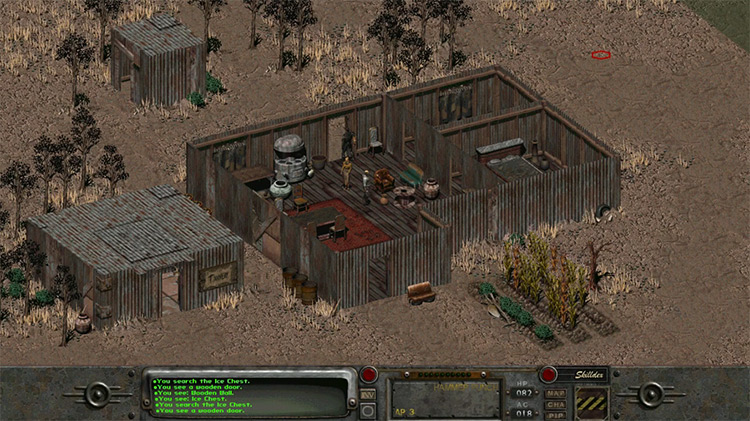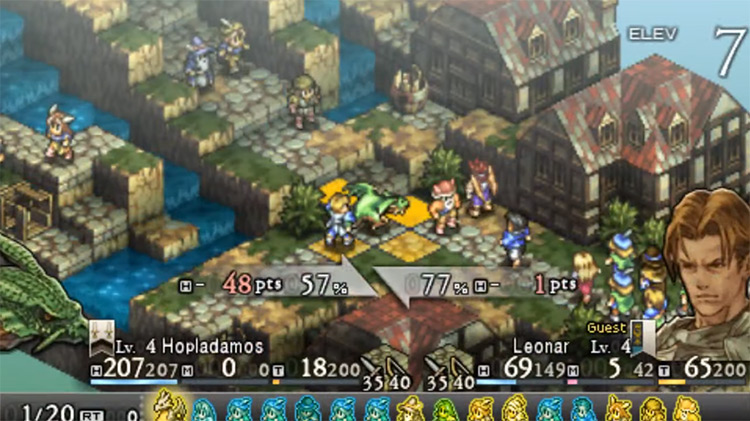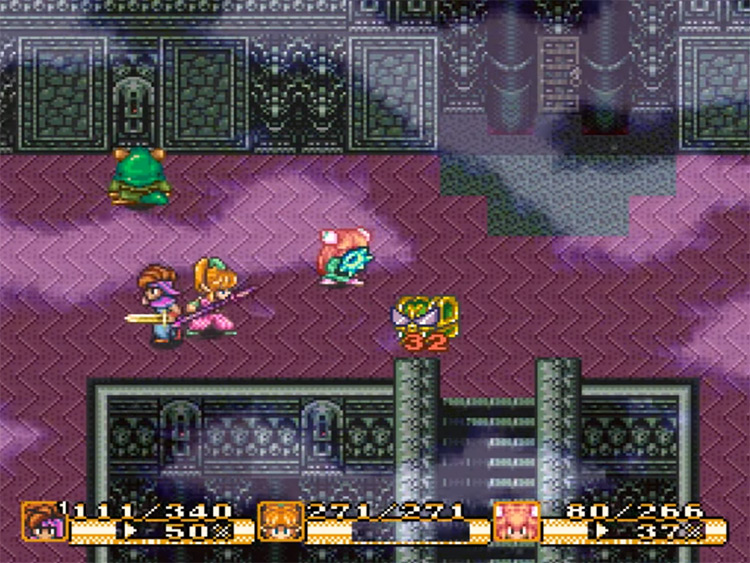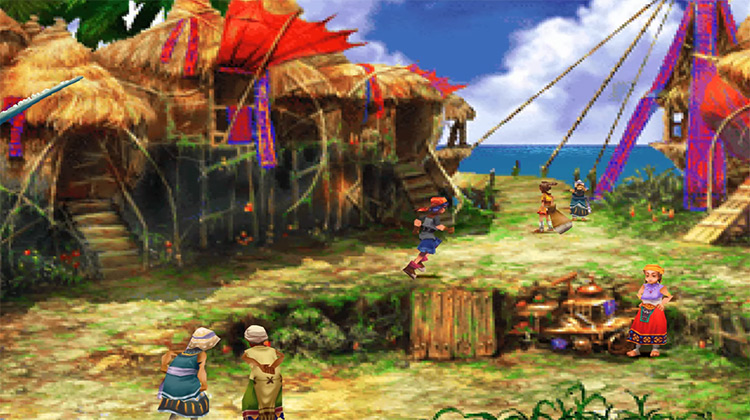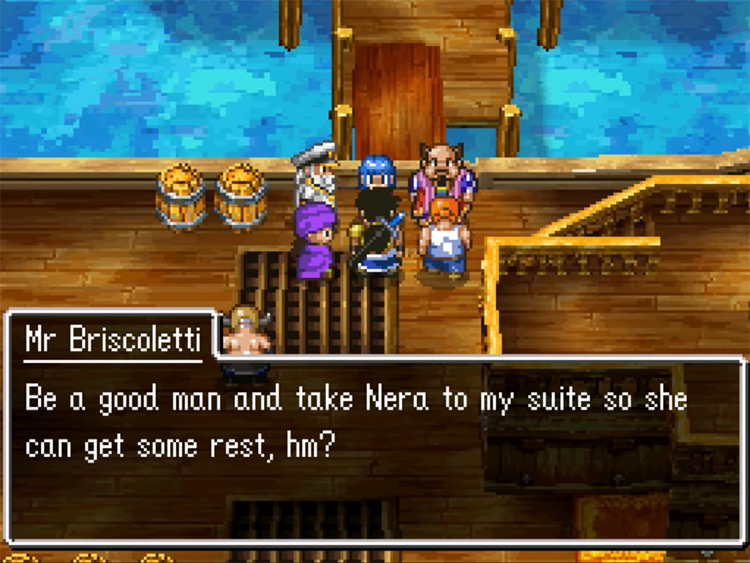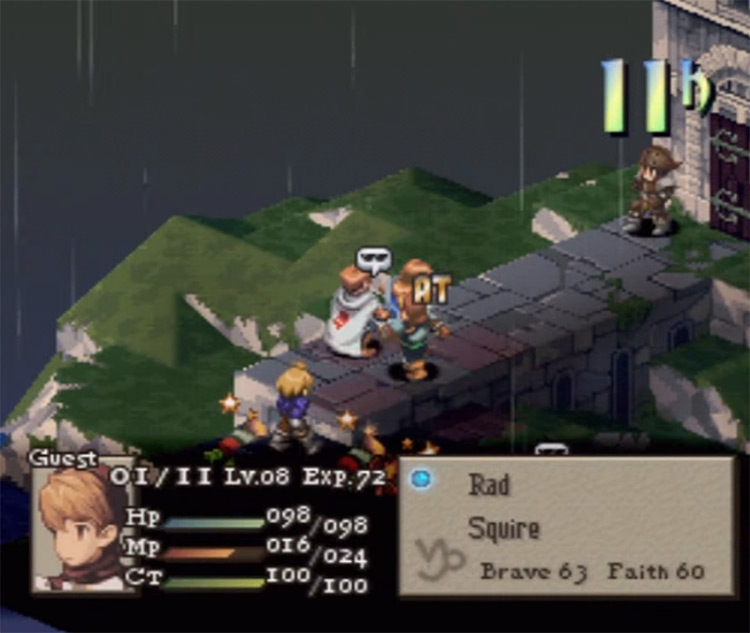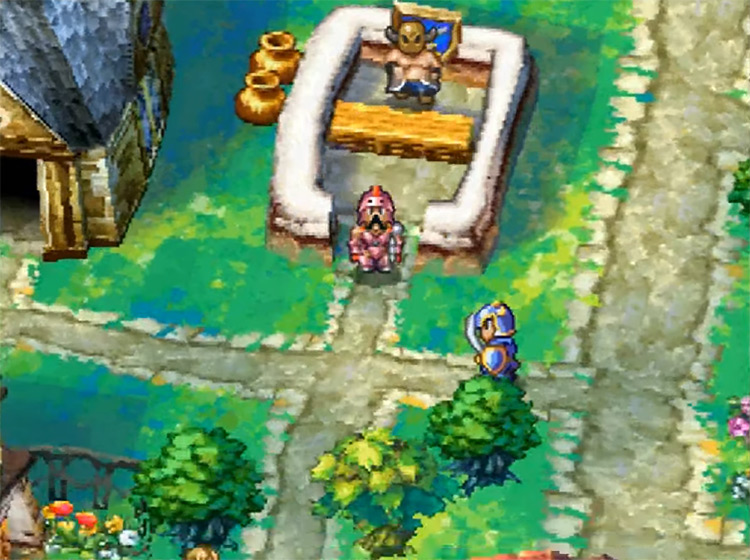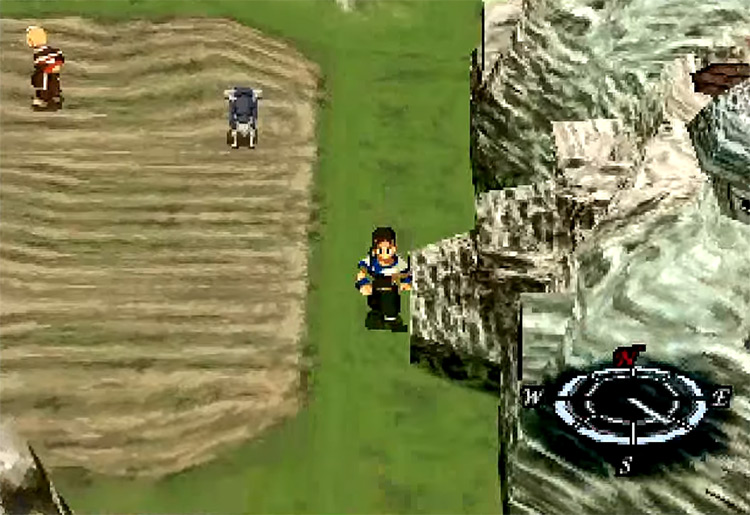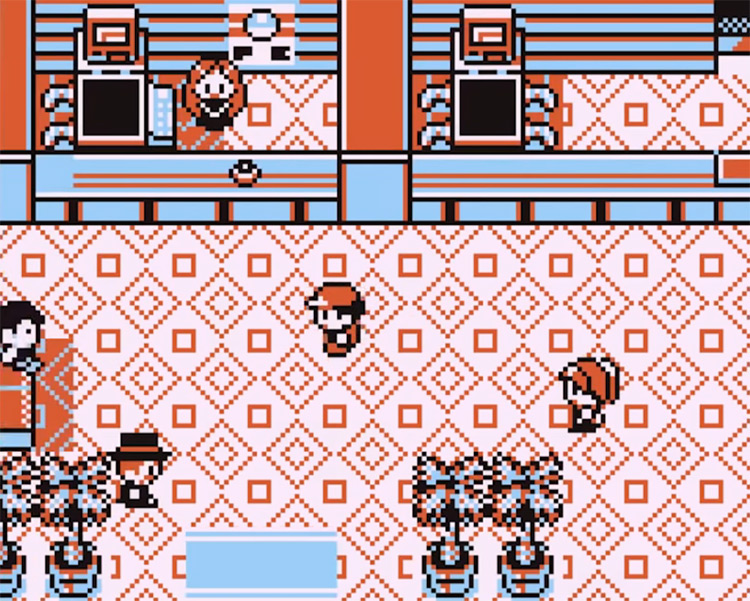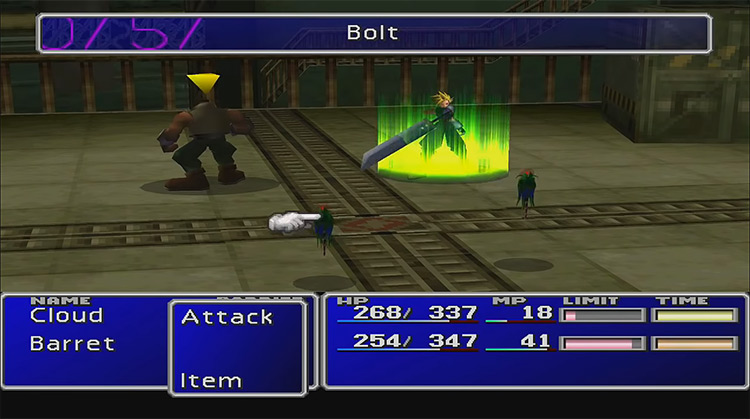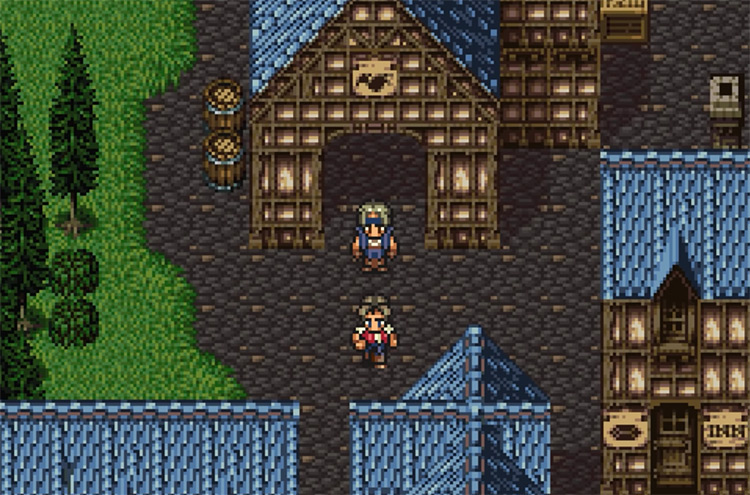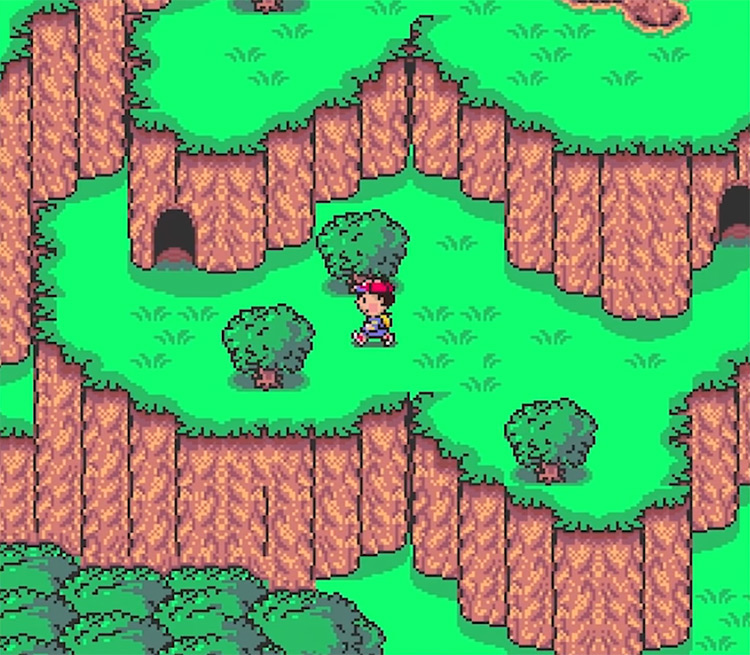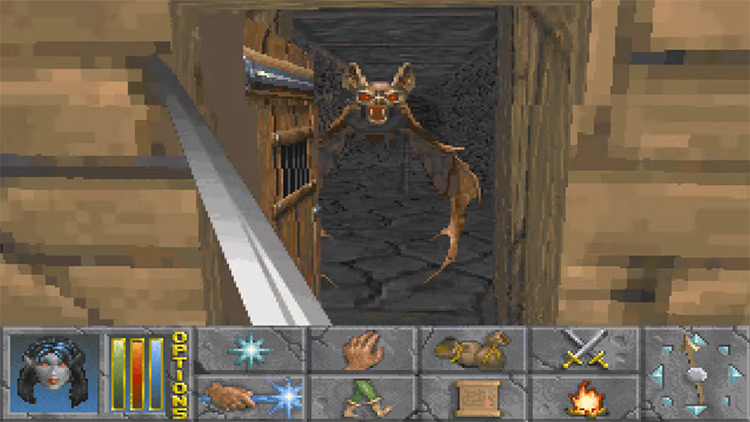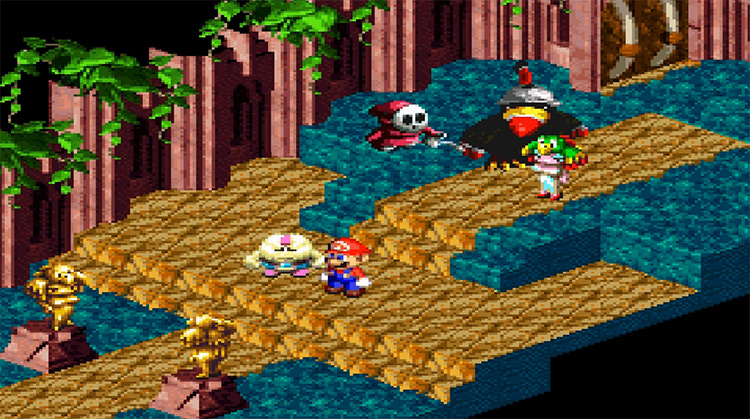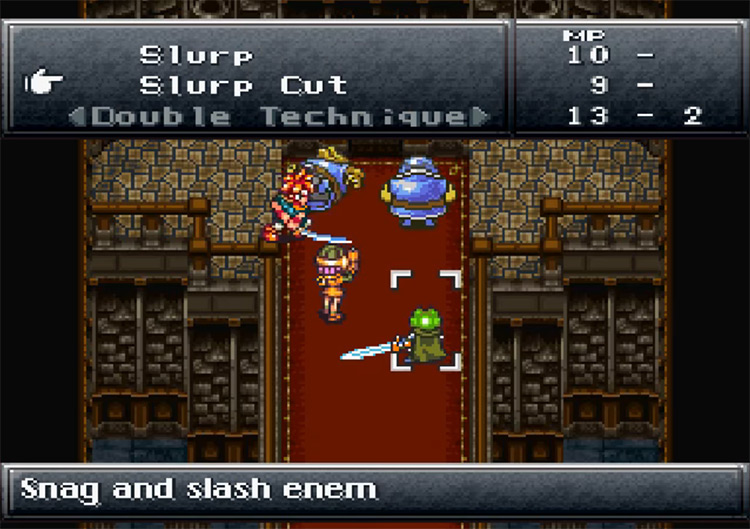Nintendo inaugurated the decade with the excellent Super Mario World on the SNES. Thanks to the rapidly advancing hardware and the advent of 3D graphics, it just got better from there. The original PlayStation and the Nintendo 64 revolutionized the industry, and the previous generation of consoles went down with a bang. This decade saw the rise of genres like first-person shooters, real-time strategy, and survival horror – but the 90s also thrust RPGs into the mainstream with iconic titles like Grandia, Chrono Trigger, and Final Fantasy VII. Let’s take a walk down memory lane as we review some of the best RPGs of the 90s.
25. Grandia (1999)
Originally on PlayStation Set in a fantasy world undergoing a bit of a technological revolution, Grandia is a competent RPG with a great sense of adventure. It has a stellar battle system that takes some pointers from Game Arts’ previous series, Lunar, but dramatically improves upon it. The story follows protagonist Justin after inheriting a magic stone that’ll lead him to the mysteries of an ancient civilization. If you’ve never tried this one out then definitely look into it and see what you think.
24. Harvest Moon (1997)
Originally on SNES An RPG about farming? Talk about a weird concept. And yet it proved to be a fun and rewarding one that turned into a multi-decade long video game series. After years of fantasy RPGs flooding the market, it’s easy to just grab the same tropes and use them to tell a new story. Something as revolutionary as Harvest Moon takes real effort and creativity. Surprisingly it’s pretty fun to be slowly clearing the fields, building up your farm, improving your tools, and getting the hang of cattle care. And this SNES version was the first one in the Harvest Moon series – so if you’re a fan of retro games, this is worth a playthrough.
23. Lunar: Eternal Blue (1995)
Originally on Sega CD / PlayStation Lunar is one of those games that gets carried forward by its characters rather than its story. Protagonists Hiro and Lucia have fantastic chemistry, and Hiro is especially likable and respectable. He’s driven, willing to put it all on the line, and doesn’t spend most of the game complaining about his heroic journey like some other RPG chumps. Something unique about this game’s localization is that the English team decided to change the script to feature more humor, fourth-wall breaking, and references to American Pop culture.
22. Lufia 2: Rise of the Sinistrals (1996)
Originally on SNES Fans of the original Lufia were quite satisfied with the sequel, which polished the former’s formula and added some fantastic new features. Dungeons no longer have random encounters – a god-send – and you can even capture and raise seven “capsule monsters” to fight alongside you. Yeah, it’s basically Pokémon. But if you’re new to the series, don’t worry about playing the first game before this one. In fact, it’s 100% better to play Lufia 2 before the original. It’s the correct chronological order, and will give this game’s ending much more impact.
21. Ogre Battle 64: Person of Lordly Caliber (2000)
Originally on Nintendo 64 The Ogre Battle series offers fans a more mature story and setting than the average JRPG. If that’s something you’re interested in, Ogre Battle 64 is a must-play from the 90s. Well, kind of. It’s true that it only made it to America after the turn of the decade. But the original Japanese release happened in 1999 – so it gets a pass. This tactical RPG features fantastic teal-time combat similar to other Ogre Battle titles like The March of the Black Queen on the SNES. It’s pretty challenging but also one of the most rewarding games on the system.
20. Wild ARMs (1996)
Originally on PlayStation Wild ARMs was ahead of the competition back when it came out. It had action-packed 3D battles, an intriguing Wild West/Sci-Fi setting, and unforgettable characters. It would have become a world-renowned classic – if Final Fantasy VII hadn’t come out just a few months later. Still, I’d say Rudy, Jack, and Cecilia’s adventure through the slowly decaying world of Filgaia remains just as enjoyable now as it was back then. And it’s never too late to discover the franchise.
19. Baldur’s Gate (1998)
Originally on PC Fans of Dungeons & Dragons had a field trip with Baldur’s Gate back when it came out. There had been games based on DnD before, but never quite so good. It was also BioWare’s first really successful game. It features real-time battles you can pause for strategic purposes, similar to how it is in the Dragon Age series. The best part about Baldur’s Gate is that you can immerse yourself in the world of Faerûn without learning the intricacies of the stat system or anything of the sort. The game makes it easy to create your character and jump into the action right away.
18. Suikoden 2 (1999)
Originally on PlayStation The original Suikoden was one of the best games of its time. But Suikoden 2 blew it out of the water with its excellent graphics, great humor, and energetic cast of characters. You can get over 100 party members – and these are not just generic grunts. They each have their own strengths and weaknesses, beautifully designed sprites, and a lot of personality. It also features multiple endings, so there’s plenty of motivation to play through the campaign several times.
17. Breath of Fire III (1998)
Originally on PlayStation I’ll be honest with you: I was about to break the rules and give this spot to Breath of Fire IV. What can I say? It’s my favorite game in the franchise. Still, I realized there was no need. Breath of Fire III is an essential part of many people’s childhoods for a reason. It has memorable characters that keep you interested in the narrative and introduced 3D environments to the franchise – though the characters and monsters were still sprite-based. Another big appeal is the fantastic jazzy soundtrack.
16. Phantasy Star IV: The End of the Millennium (1995)
Originally on Sega Genesis One of the most underrated games on this list has to be Phantasy Star IV. It was missed by users and critics due to coming out very late into the Sega Genesis’ lifespan, but it was a grave mistake to skip over this title. The game is easily the best in the franchise, with superb spritework, great music, and a satisfying conclusion to the original saga where you finally defeat the Dark Force from the first game. It was also pretty innovative for the time. My favorite feature was the ability to set up macros to use in combat, making it more straightforward and keeping the least-important battles short.
15. Fallout 2 (1998)
Originally on PC Fallout 2 takes place in the year 2241, which is 164 years after the bombs fell, and 80 years after the original game’s story. At the beginning, you’re given the task of procuring a Garden of Eden Creation Kit to restore the environment your clan inhabits – but how you go about it is entirely up to you. And that’s the beauty of the Fallout series. It brought real agency into gaming. Your dialogue choices and even the stats you choose to level have consequences in the world around you and how others react to your character. Sure, it had some bugs. Well, lots of bugs… Still, I’m sure you can overlook a couple of hiccups for such a fantastic narrative experience.
14. Tactics Ogre: Let Us Cling Together (1995)
Originally on PlayStation The original Tactics Ogre on the Super Famicom was one of the most amazing games never to make it abroad – that is, until it was released on PlayStation. Developed by Quest, the game is a wonderful tactical RPG that influenced the genre profoundly. The story was solid, the gameplay is almost perfect – and the graphics are pristine. The class system was also incredible, though that’s the one thing Final Fantasy Tactics does better than this classic.
13. Secret of Mana (1993)
Originally on SNES The second entry in the Japanese Seiken Densetsu franchise was localized to North America as Secret of Mana – giving birth to the “Mana” series abroad. Real-time action RPGs were a somewhat recent invention at the time, and the public loved them. It was the perfect way to introduce RPGs to new audiences that just couldn’t see the appeal in turn-based combat. The Ring Command system was also pretty revolutionary. And it gave you a wealth of options during battle without having to pause the action. We can still see evolved forms of this mechanic in games like Monster Hunter: World.
12. Chrono Cross (2000)
Originally on PlayStation The sequel to Chrono Trigger may not have had Akira Toriyama’s amazing art. But other than that, it’s a worthy successor to one of the best games ever made. Like Ogre Battle 64, it was released in Japan during 1999 so it counts for our ranking – and I just couldn’t leave out such a fantastic title. It features a deeply relatable story that reminds us of the things we have control over vs. the things we don’t. It’s realistic and bravely tackles the inherent unfairness of life.
11. Dragon Quest V: Hand of the Heavenly Bride (1992) (JP)
Originally on Super Famicom The West got plenty of fantastic JRPGs during the 90s. But there were still many that wouldn’t make it abroad for decades to come. Dragon Quest V was one of those games, and I couldn’t bring myself to leave it out of the ranking. It may not bring anything new to the table in terms of gameplay. But the fundamentals of the DQ series were polished to a mirror sheen. The story is also intimate and emotional in a way you just didn’t see that often back in the day. Western fans only got to enjoy this fantastic game after the 2009 Nintendo DS remake, which is superb. Alternatively, you can get a full translation patch for the Super Famicom ROM.
10. Final Fantasy Tactics (1998)
Originally on PlayStation Final Fantasy is one of those franchises that’s unafraid of exploring new territory when it comes to gameplay. There have been FF fighting games, rhythm games, and lots more. One of Square’s first departures from the classic turn-based RPGs they did so well was Final Fantasy Tactics, which added the strategic element of moving your units around on a 3D grid-based arena. While other games like Tactics Ogre had done it before, Final Fantasy Tactic’s job system seemed like the brightest star in the cosmos compared to everything that had come before.
9. Dragon Quest IV: Chapters of the Chosen (1992)
Originally on SNES Dragon Quest V is fantastic. But the fourth entry in the series is nothing short of a masterpiece. It’s the first game in the Zenithian Trilogy, making it a direct prequel to DQV. The game follows many different protagonists, each of them facing their own trials and tribulations. Their adventures run parallel to each other for the most part, but they slowly come together as the game goes on. It’s definitely one of the best storytelling styles found on the Dragon Quest series – and the illustrations by Akira Toriyama lend a lot of personality to these numerous adventurers.
8. Xenogears (1998)
Originally on PlayStation Few games have aged as well as Xenogears – the first game in the “Xeno” universe, which includes Xenosaga and Xenoblade. It’s a shining example of everything that made the 90s such an exciting time for RPG fans. It also innovates with its own take on the ATB system introduced by Chrono Trigger. The plot pairs dark fantasy and science fiction like a fine wine with aged cheese. The giant robots and anime tropes are a nice bonus. Granted it’s a bit slow-paced. But if you have a bit of patience, you’ll discover a true classic.
7. Pokémon Red & Blue (1998)
Originally on Game Boy Released in Japan as Pokémon Red & Green in 1996, then elsewhere as Pokémon Red & Blue in 1998, these games were the first entry in the Pocket Monster series. And they were revolutionary. It was hardly the first monster-raising game ever made. But they did it best. Game Freak managed to craft a game that was both deep and attractive to all audiences. It also managed to make players forget it was an RPG, which tricked RPG naysayers into trying it out. This fantastic title introduced us to the original 151 Pokémon everyone knows and loves, and made “Gotta catch ‘em all!” a household reference.
6. Final Fantasy VII (1997)
Originally on PlayStation If this was a list of the most influential or highly-regarded RPGs of the 90s, FF7 would come out on top for sure. Everyone who grew up in this era loves this game. And it’s easy to see why. Both the game’s aesthetic and narrative are full of new ideas. FF7 tackles complex philosophical and metaphysical themes, and carries an environmentalist message that would make Al Gore proud. The visuals were also out-of-this-world (for PlayStation). The city of Midgard is a Sci-Fi enthusiast’s dream, and stuff like spell-casting and Limit Breaks featured some of the sweetest eye-candy ever seen in gaming.
5. Final Fantasy VI (1994)
Originally on SNES / PlayStation Most people would probably burn me at the stake for this, but Final Fantasy VI is just all-around better than its successor. I mean sure, the 3D graphics of FF7 were excellent back in the day – but FFVI’s fantastic spritework aged much better. I also find the narrative much more exciting, mainly thanks to the villain Kefka. I mean, the murderous jester actually succeeds in destroying the world and becoming a god right in the middle of the story! Exploring the World of Ruin looking for your allies so you can set history back on track is an unforgettable experience. And if you’re thinking of picking up this title for the first time, we’ve got some handy tips & tricks to help you get started.
4. EarthBound (1995)
Originally on SNES EarthBound is one of those low-profile gems that only started getting the recognition it deserved many years after release. It’s a narrative masterpiece that employs contextual storytelling that’s interwoven with its gameplay. A prime example is the “Homesick” ailment, which will cause Ness to start missing turns if he spends too much time away from home without at least a phone call. There’s also the fantasy realm of Magicant, which grants you access to Ness’ subconscious world. That’s one exciting way of fleshing out a character!
3. The Elder Scrolls 2: Daggerfall (1996)
Originally on MS-DOS Some people may find the JRPG genre a bit hard to get into. But Western RPGs used to be downright cryptic for most people, and they had been for years. Then came Daggerfall. The second entry in the Elder Scrolls series is a liberating experience that puts much more emphasis on immersing yourself in an exciting fantasy world, rather than worrying too much about stat management and the like. The fact that the game’s map measures a whopping 209,331 square kilometers with over 15,000 cities, towns, dungeons, and other points of interest is also remarkable. It’s an endless adventure! There’s also a fan-made upgraded version called Daggerfall Unity that may hold up better in modern times. And if you try it out, look into playing it with some mods too.
2. Super Mario RPG: Legend of the Seven Stars (1996)
Originally on SNES A Mario-themed RPG was the last thing anyone was expecting from Nintendo in the 90s. The character just doesn’t fit in with the sword-wielding, magic-casting warriors we’re used to. And yet, it worked. Actually, it worked really well. Super Mario RPG is fantastic. Nintendo took classic RPG staples like turn-based battles and leveling, and transformed them in small but meaningful ways that make this game feel like a proper Mario title, rather than a regular RPG with Mario painted all over it. This collaboration between Nintendo and Square appeals to Mario fans and hardcore RPG buffs equally. A must-try for SNES fans and hardcore Mario fans alike.
1. Chrono Trigger (1995)
Originally on SNES Chrono Trigger is the child of many genius minds in the business, including Final Fantasy’s Hironobu Sakaguchi and Dragon Quest’s Yuji Horii. And the fantastic art by Dragon Ball creator Akira Toriyama is the icing on the cake. Chrono Trigger has one of the best stories in the medium, with great pacing, plenty of exciting twists, and time-travel shenanigans. The game’s use of an Action Time Battle system rather than the classic turn-based fare was also profoundly innovative and changed the industry forever. There’s a reason this game is still loved so many decades after release.
